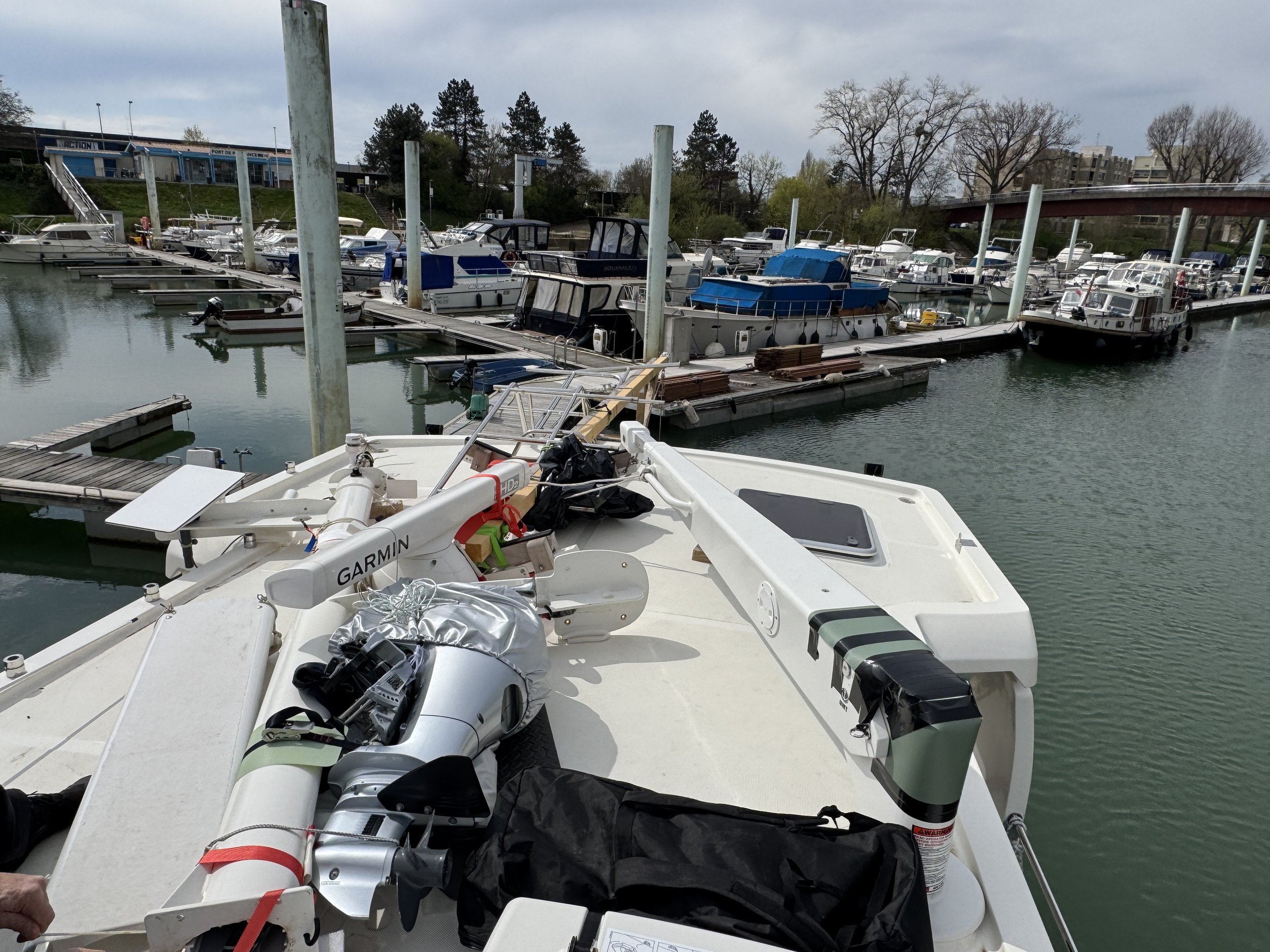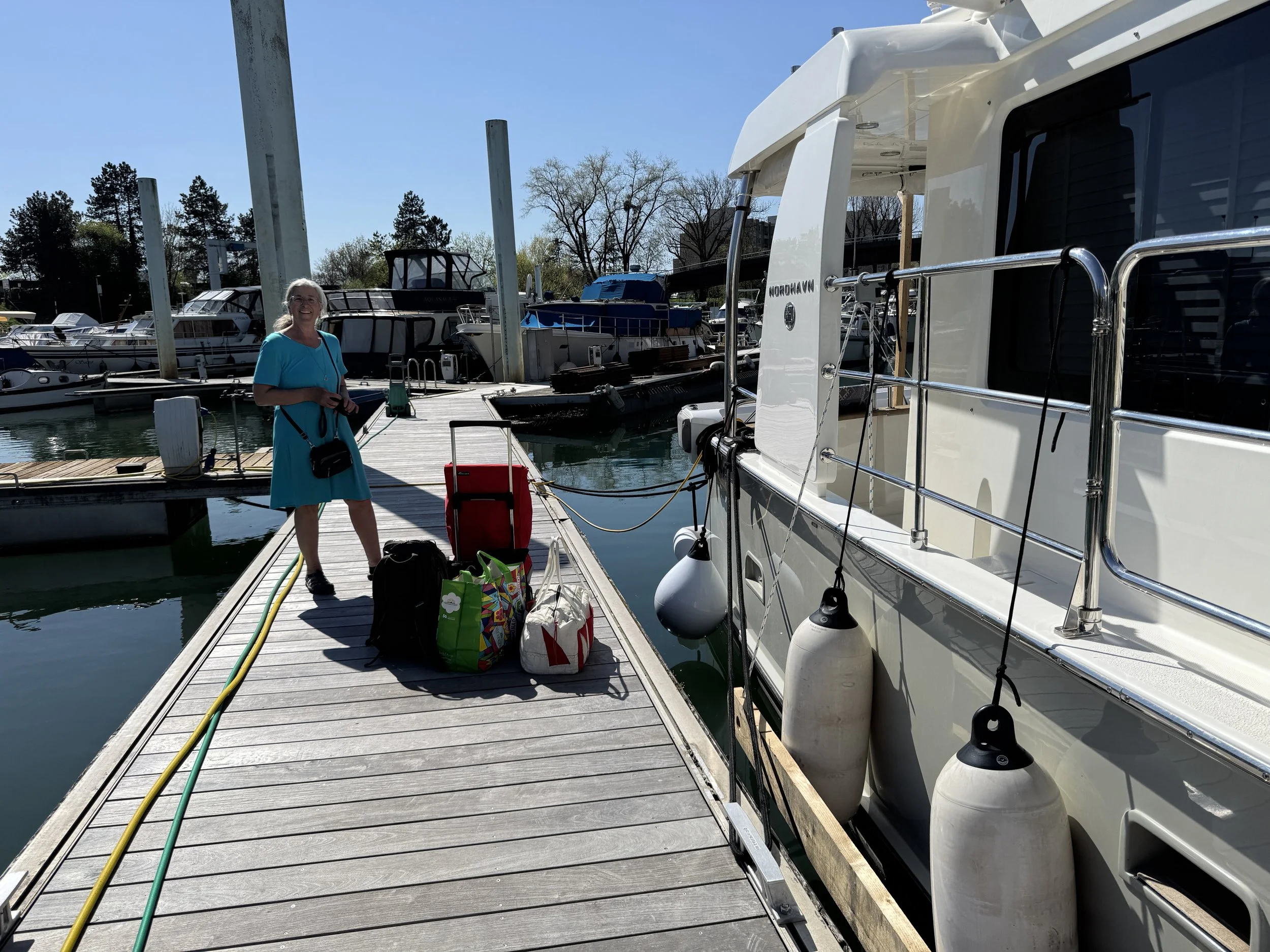The Lower Bourgogne
We topped off our fuel tanks before leaving Mâcon and headed further up the Saône River. Fuel is outrageously expensive here - 1.76€/liter = $7.57/gallon! Thankfully we are no longer bucking the huge current of the Rhône and are running at idle - barely burning any fuel at all.








We were now in the lower Burgundy wine region. Here along the Saône we found expansive plains covered with lush meadows and farm fields (wheat, corn, oil seeds, market gardens). We stopped at a very large halte in the town of Tournus where there was both water and power and later that afternoon wandered up into town to see what was there.
The Abbey Church of Saint-Philibert dominates the village. Built in ancient Roman times the monastery was first established in 875. It became home to a group of monks fleeing from the Vikings. These refugees were offered a home by King Charles the Bald (823-877) in the small monastery at Tournus where a community of monks already lived.
Saint-Philibert is the main surviving building of the former Benedictine abbey. The Romanesque portal is composed of alternating orange-yellow and white stones.
We wandered up through the facade, inside the central nave the first thing you notice is the stained glass windows which cast a luminous rose colored light. The front is dominated by an enormous organ dating to around 1629. At the rear of the central aisle we noticed stunning mosaic floors. They’re from the 12th century reconstruction and were only recently rediscovered. They depict the labors of the months and the signs of the zodiac. Curiously, the Gemini twins are depicted naked and without their man-parts.
We meadered out into the peaceful, completely unadorned cloister. Then up a narrow spiral staircase to the Chapel where you can see the nave of the church from above. Before leaving we descended into the dark, low crypt where we used our phones as flashlights to avoid hitting our heads and stumbling into walls. The abbey crypt is one of the oldest parts of the building with rows of columns, stones carved with foliage and ancient frescoes.
I am not a historian or religious scholar by any stretch but one cannot visit these medieval sites without feeling the magnitude of the lives of those who passed through here over the centuries.



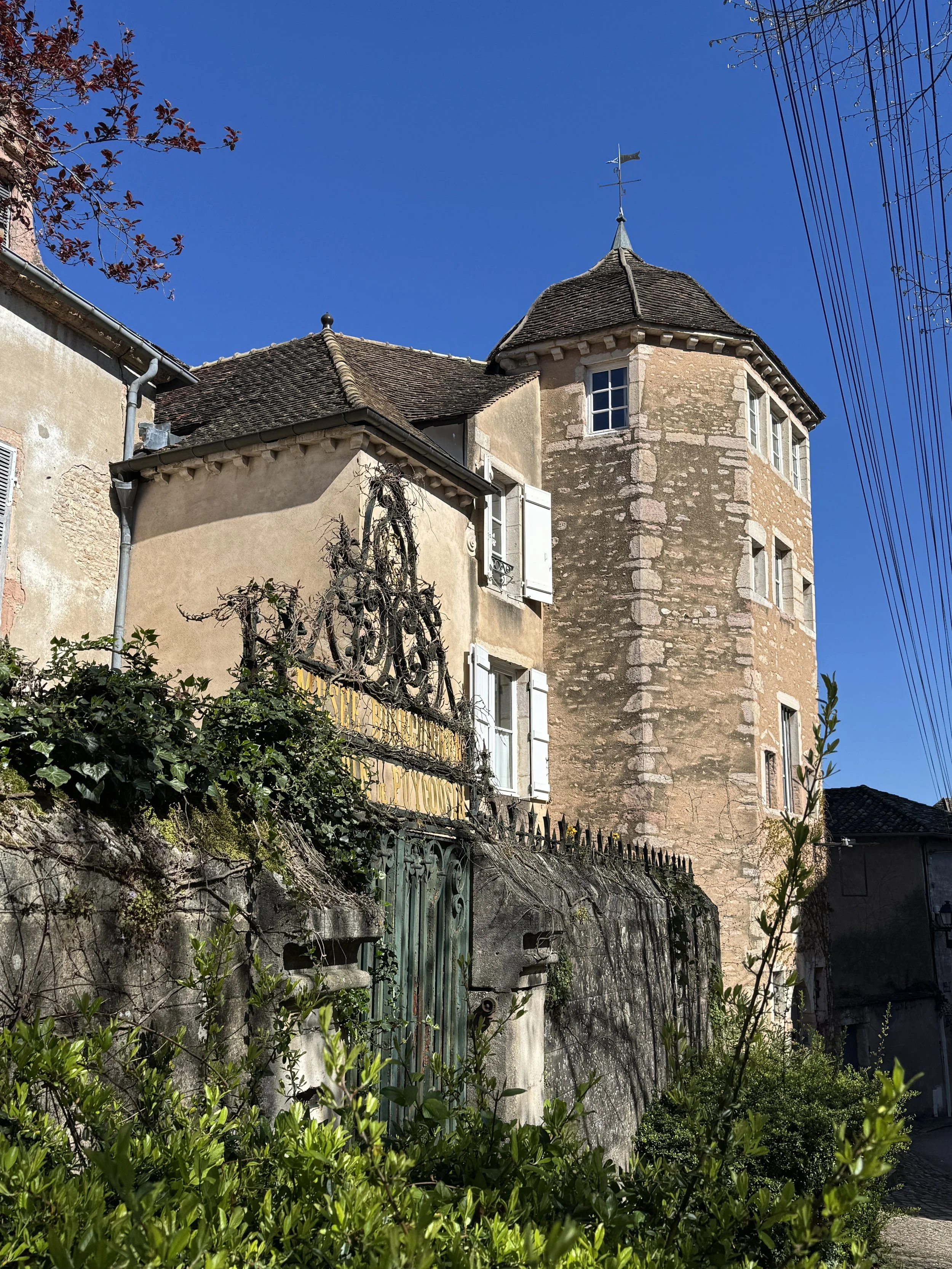



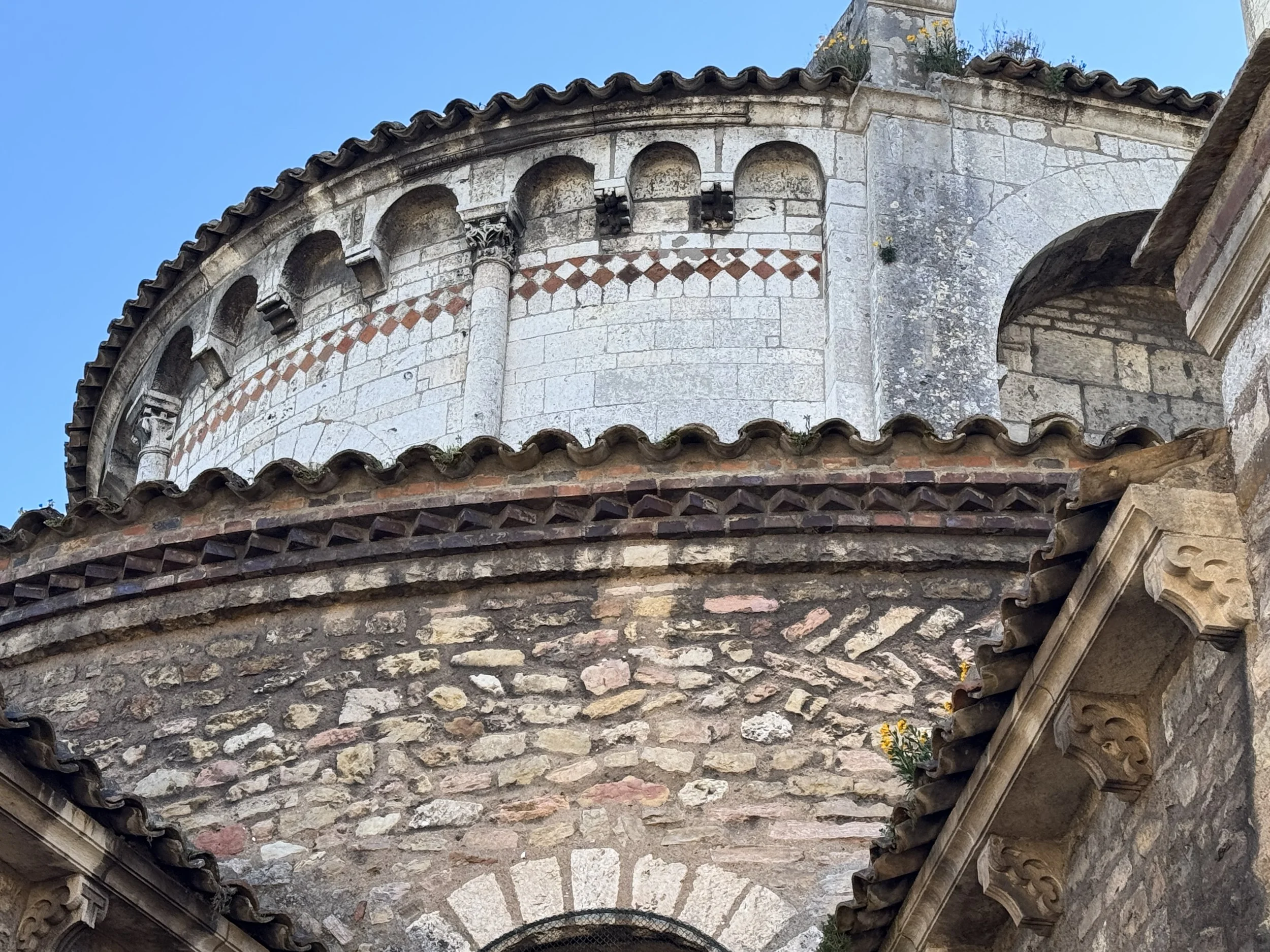













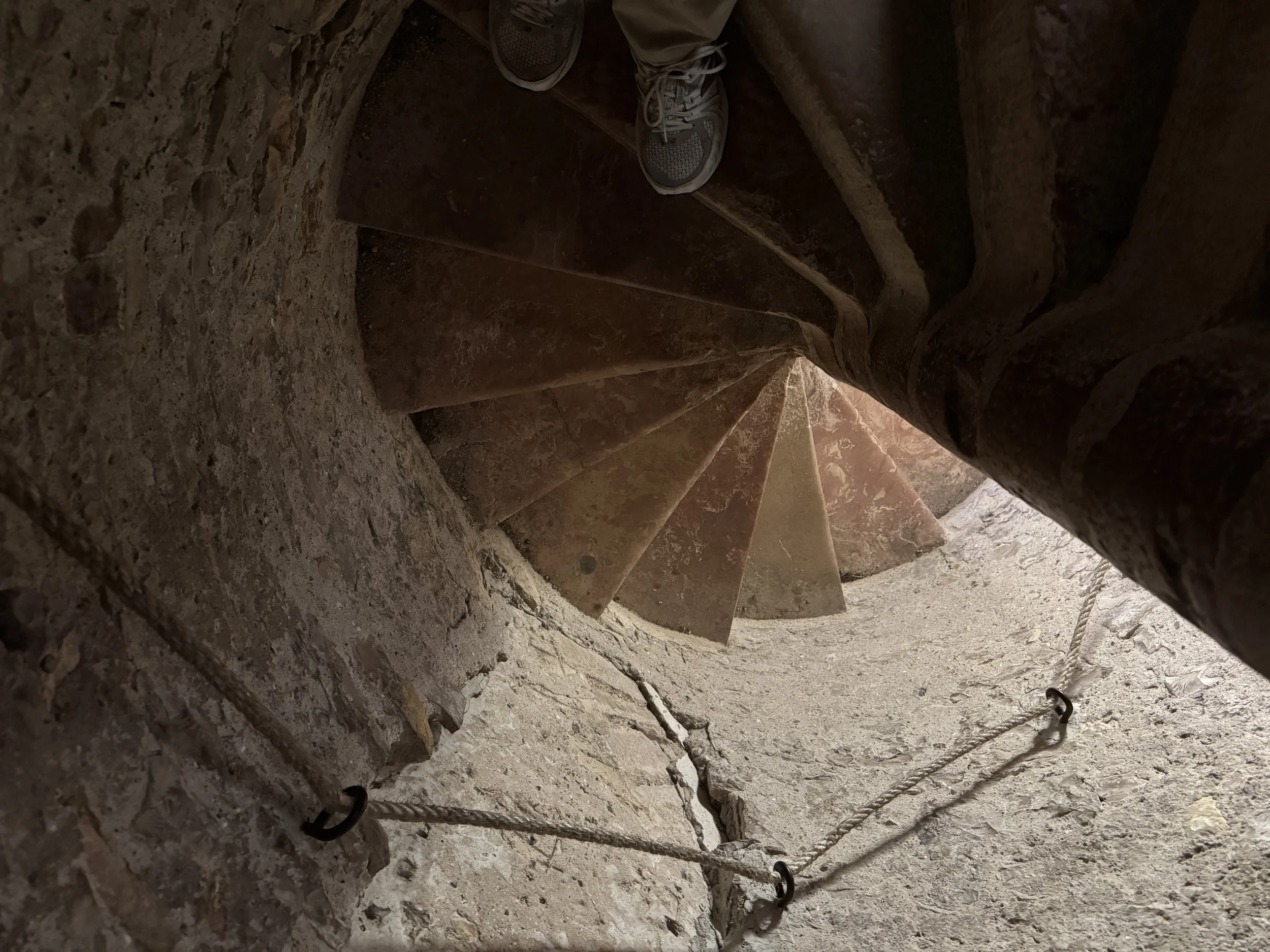

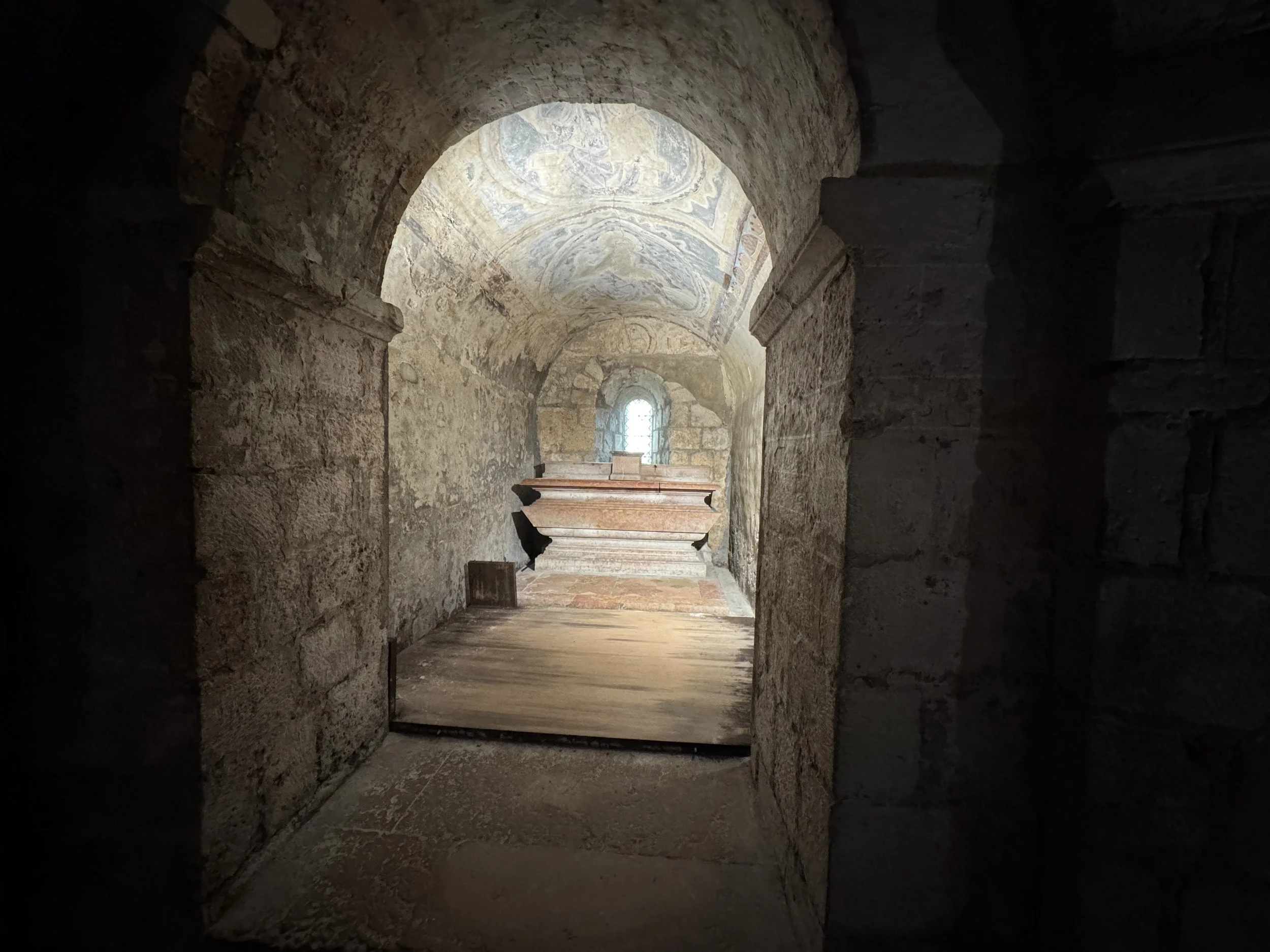

We returned to Meraki for the last of our Côtes du Rhône and made a plan for the next day.
The next leg of our trip would take us further up through Burgundy into the Côte Chalonnaise wine region at the western edge of the broad valley of the river Saône. The grapes of the region are predominantly Pinot Noir and Chardonnay with some Aligoté and Gamay also grown. The landscape is wide undulating hills covered by vineyards interspersed with orchards and other types of farming.











We arrived in the marina in Chalon-sur-Saône on a windy afternoon. Two dockhands met us at the waiting pontoon and instructed us to stay to the far left side of the channel as we approached our mooring and to be aware that the wind gusts would increase as we rounded the bend ahead. We followed their instructions without any issues, tied up, and went up to the office to get the lay of the land. There we met a live-aboard from the Netherlands who filled us in on everything from grocery stores and department stores to restaurants, bakeries, markets and local delicacies. While walking back to the boat we were stopped on the pontoon by another local resident who was curious as to why we would travel on such a terribly windy day. We shrugged, having not realized it was a bad boating day, and stupidly replied “we’re from Alaska”.
As we were tied to the dock on our starboard side we had the perfect set-up to finalize our roof dismantling in preparation for the super low bridges we would encounter along the next leg of our inland journey. This was getting old, but we still had work to do to reduce our height below that of the lowest bridge (3.4 meters or ~11 feet) published in the waterways guide. Once we had finalized it, with full water and fuel tanks, we were at 3.37 meters. It is difficult to measure something that is floating, but if our measurements were correct, this would mean we’d have 3 centimeters or about an inch of headroom!
We then used the bamboo we had harvested and lashed one stick to each forward rail at the exact height of the tallest objects on the roof. These were sacrificial - our hope being that should they touch the underside of a bridge we would have a chance to back up before damaging anything on the roof of the boat. Fingers crossed.
If you’ve read any of my previous posts you know that I am a market addict. Turns out this town is a market lover’s dream - there is a different market happening in some part of town four days out of every week! The Sunday market is held in the heart of the historic center in Saint-Vincent square. This piazza is dominated by the cathedral and surrounded by beautiful half-timbered houses. The unique architectural style dates back to the late 15th century and remained an influential technique for around 300 years. Once the wooden structure was in place the spaces between the timber planks was filled with a mixture of small stones, earth, sand and straw. There were no set proportions, the builders would make do with whatever they had at hand to use as filler. The outside of the structure was then covered in torchis, a mixture of lime, straw, sand and clay which would seal the external structure from the outside elements. I love this charming style of architecture - for me the setting of this particular market stands out as the most beautiful I’ve seen to-date.
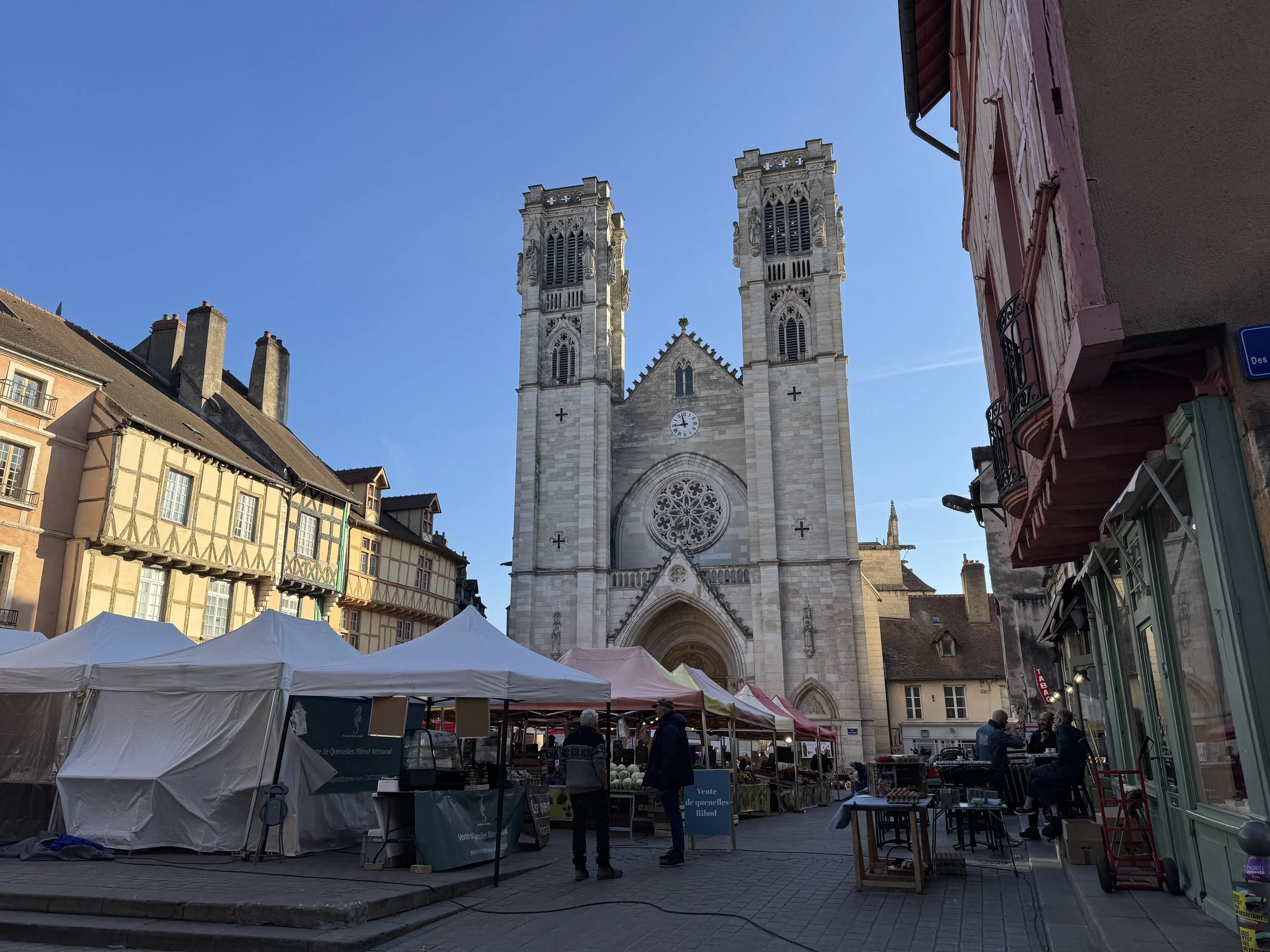




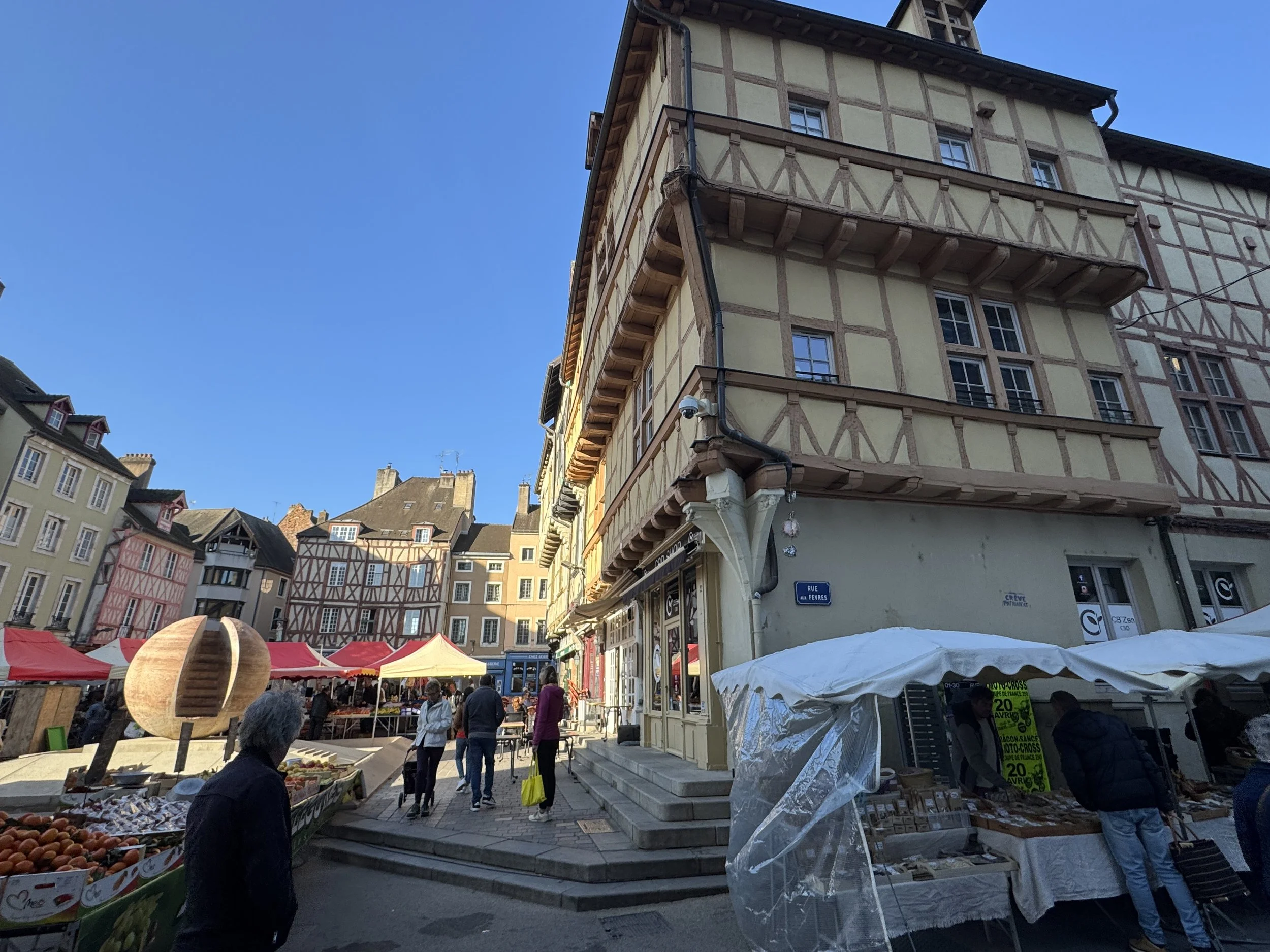



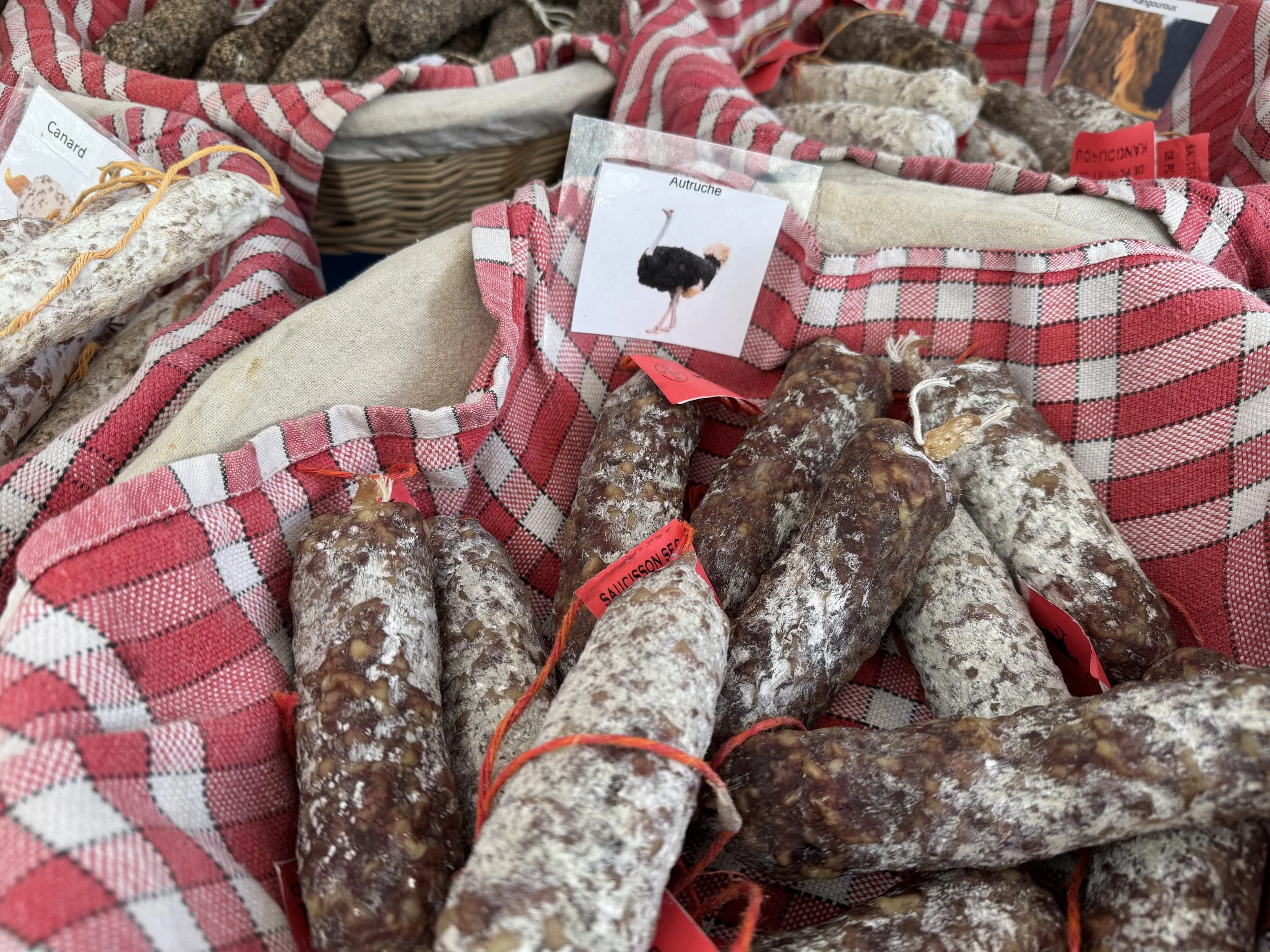


Chalon-sur-Saône is also famous for the birthplace of photography. In 1826 local resident Nicephore Niépce was noted for taking the world's first photograph. The photography museum here is home to 6,000 cameras and optical objects, as well as over 3 million images. Sadly it was closed while we were there.
The city is also an important regional trading center. There are many street festivals, fairs and carnivals throughout the summer and for three weeks every July "Chalon dans la Rue", a theatrical street fair, takes place where the center of town is filled with hundreds of performing artists. I bet it is well worth experiencing if you can visit in July!
The next couple of days were spent cleaning the boat inside and out, doing laundry, making up the beds in the bunk room and preparing the boat for a visit from our son and daughter-in-law. And I had an unrestrained shopping spree to stock up on all the staples not found at the market!
The kids arrived, we took a walk, ate dinner and played a game. Tomorrow we would head for the Canal du Centre.
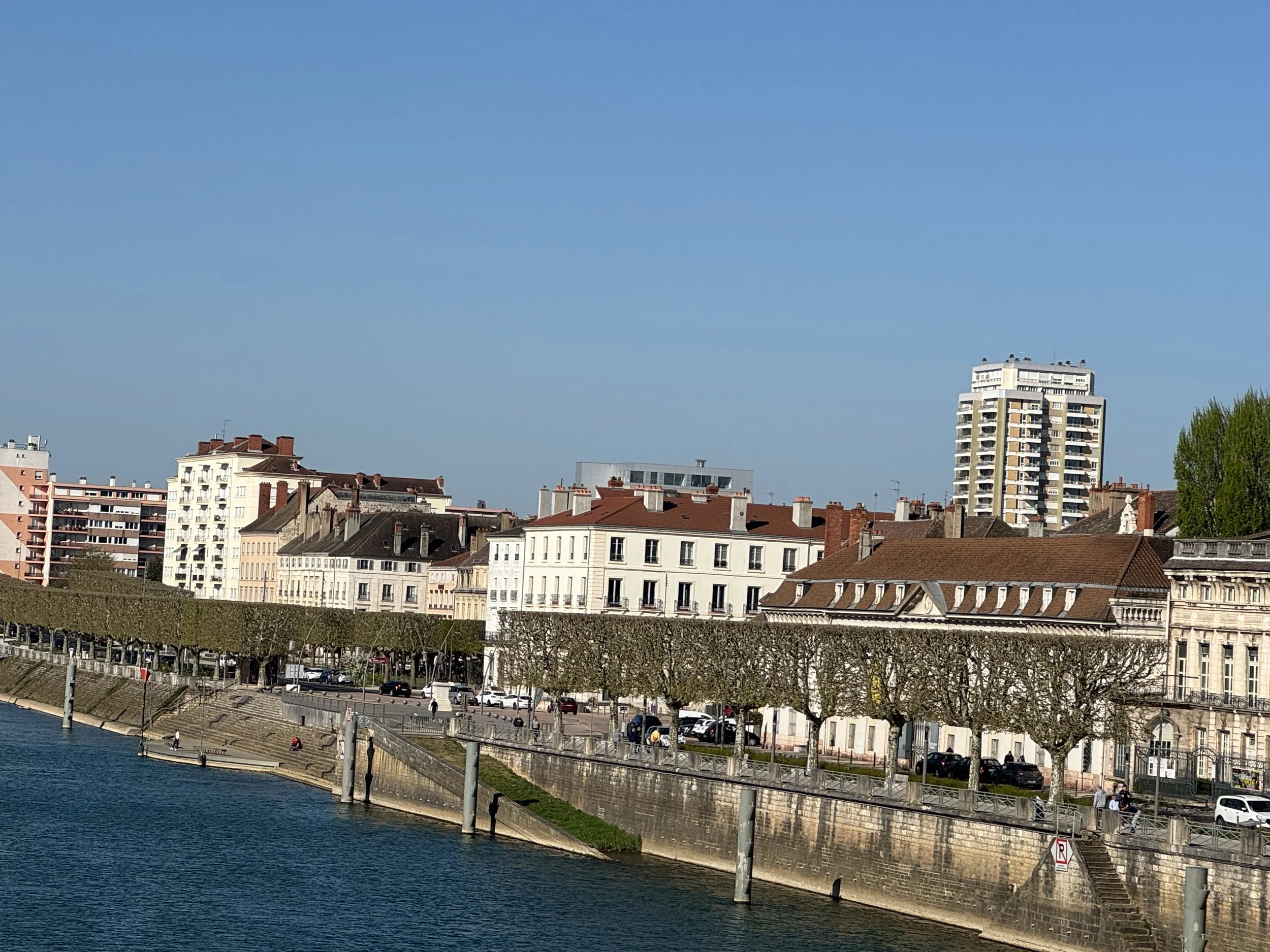


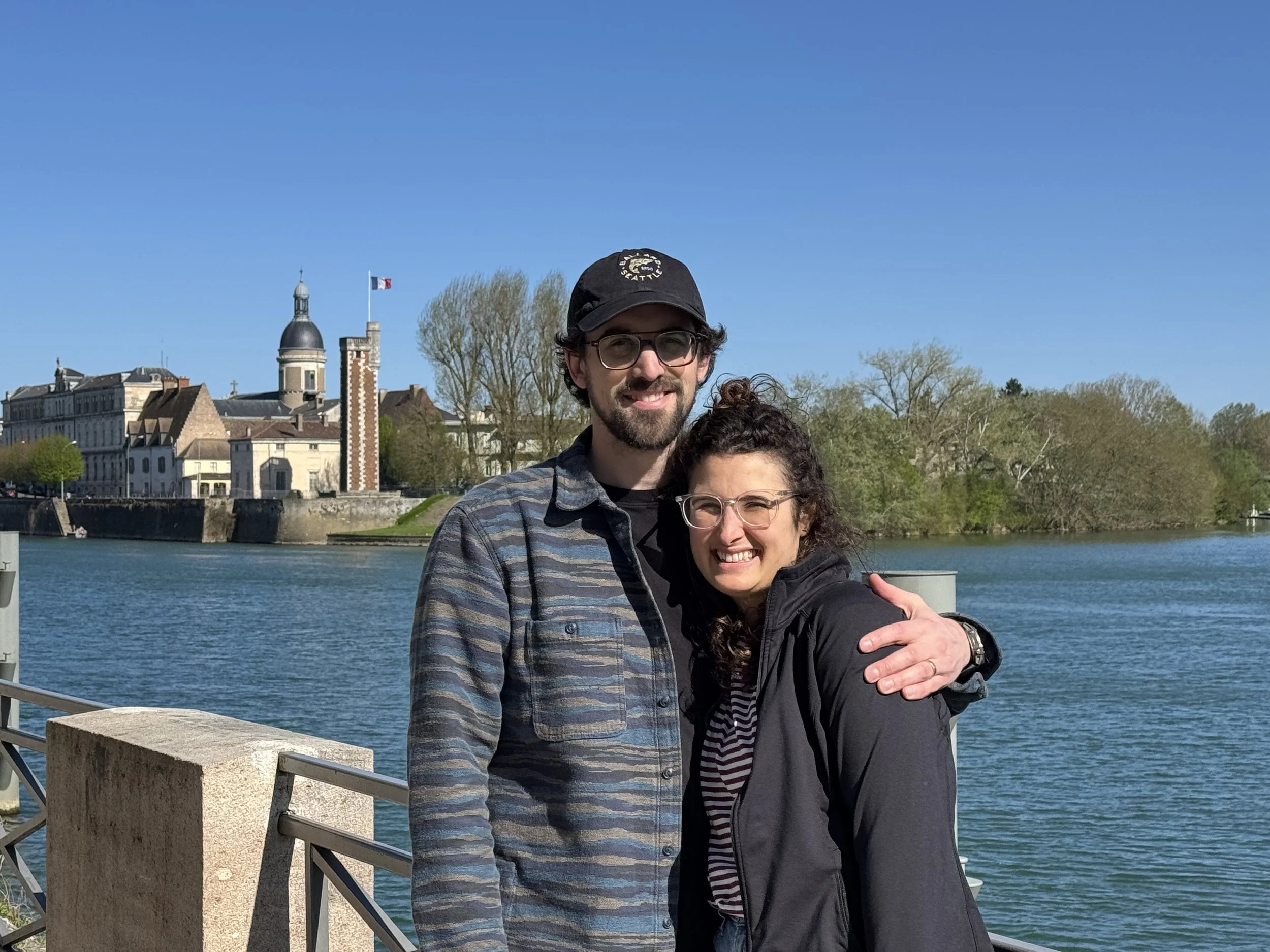

Note: photo captions will not appear if viewing on a cell phone.









